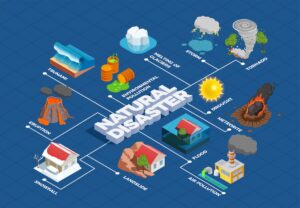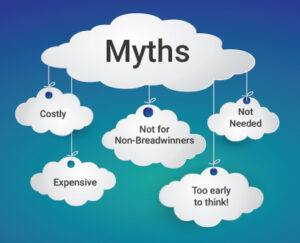Artificial Intelligence (AI) is transforming industries, and at its core are machine learning (ML) and deep learning (DL), two closely related fields that enable machines to learn from data. However, while both fall under the umbrella of AI, deep learning and traditional machine learning differ significantly in their approaches, capabilities, and applications. Understanding the difference between these two methods is crucial for selecting the right approach to solve a particular problem.
In this article, we will explore the key differences between deep learning and traditional machine learning, their respective strengths and weaknesses, and how they are shaping the future of AI.
Machine learning is a subset of AI that involves training algorithms to learn from data and make predictions or decisions based on it, without being explicitly programmed. Traditional machine learning involves the use of statistical techniques and algorithms that learn patterns from structured data (such as numbers, text, or images).
Machine learning algorithms can be classified into several categories, including:
- Supervised learning: The model is trained on labeled data (input-output pairs) to make predictions or classify data.
- Unsupervised learning: The model identifies patterns in data without predefined labels (e.g., clustering similar items together).
- Reinforcement learning: The model learns through trial and error by receiving feedback based on actions taken in a dynamic environment.
Traditional machine learning models are typically built using simpler algorithms such as linear regression, decision trees, support vector machines (SVM), and k-nearest neighbors (KNN). These models are often trained using well-structured datasets and require explicit feature engineering to select relevant attributes from raw data.
Deep learning is a subset of machine learning that focuses on neural networks with many layers—hence the term “deep” learning. These deep neural networks are designed to automatically learn from large volumes of unstructured data, such as images, audio, and text, with little to no human intervention in feature engineering.
Deep learning algorithms are based on artificial neural networks (ANNs) that mimic the structure of the human brain. These networks consist of layers of nodes (neurons) that process information, with each layer progressively learning more complex patterns. Deep learning has gained prominence due to its ability to handle massive amounts of data and learn intricate patterns and representations in the data, making it suitable for tasks like image recognition, natural language processing, and speech recognition.
Some of the most common deep learning architectures include:
- Convolutional Neural Networks (CNNs): Used for image and video recognition, classification, and object detection.
- Recurrent Neural Networks (RNNs): Used for sequential data such as time series, speech, and natural language.
- Generative Adversarial Networks (GANs): Used for generating new data, such as images, by training two neural networks in opposition.
- Transformers: Used for natural language processing tasks like translation, text generation, and summarization.
- Data Requirements
- Traditional Machine Learning: ML models generally work well with smaller, structured datasets. Feature engineering plays a critical role in identifying relevant patterns in the data. In many cases, domain expertise is required to preprocess and select the right features to improve model performance.
- Deep Learning: Deep learning models excel with large volumes of data, particularly unstructured data. They automatically learn complex features from raw data, without requiring extensive manual feature engineering. As a result, deep learning is well-suited for tasks such as image recognition, natural language processing, and speech recognition, where data is abundant and complex.
- Model Complexity
- Traditional Machine Learning: Traditional ML models are relatively simple and interpretable. For example, linear regression and decision trees are straightforward to understand and explain. This makes them suitable for tasks where interpretability is important and the data is not overly complex.
- Deep Learning: Deep learning models, on the other hand, are highly complex, with numerous layers of neurons and parameters. These models are often described as “black boxes” because they are harder to interpret and understand. While deep learning models can achieve remarkable accuracy on complex tasks, the lack of transparency can be a challenge, especially in fields where model explainability is critical, such as healthcare or finance.
- Training Time and Computational Resources
- Traditional Machine Learning: Traditional ML algorithms are typically faster to train and require fewer computational resources. Since they work with smaller datasets and simpler models, they can often be trained on a standard desktop or laptop with relatively low power.
- Deep Learning: Deep learning models require significant computational power and are usually trained on specialized hardware, such as Graphics Processing Units (GPUs) or Tensor Processing Units (TPUs). Training deep learning models can take hours or even days, depending on the size of the dataset and the model architecture. This makes deep learning more resource-intensive and slower to deploy than traditional machine learning.
- Performance with Unstructured Data
- Traditional Machine Learning: Traditional machine learning models often struggle to perform well on unstructured data, such as images, audio, and text. They require the data to be preprocessed and transformed into a structured format, which can be a time-consuming and complex process.
- Deep Learning: Deep learning shines when it comes to unstructured data. Its ability to automatically learn features from raw data means it can be applied directly to tasks like image recognition, speech recognition, and natural language processing without the need for manual feature extraction. Deep learning models can capture more nuanced patterns in unstructured data and achieve superior performance compared to traditional ML models.
- Flexibility and Generalization
- Traditional Machine Learning: Traditional ML models are often more versatile in tasks with structured data, where clear relationships between inputs and outputs exist. However, their performance tends to degrade when faced with more complex, high-dimensional, or unstructured data.
- Deep Learning: Deep learning models are highly flexible and can generalize well to a variety of tasks, especially when large datasets are available. Deep learning can be used across different domains, including vision, language, and speech, and is capable of transferring knowledge from one task to another (e.g., transfer learning).
- Interpretability and Transparency
- Traditional Machine Learning: Many traditional ML algorithms, such as decision trees or linear regression, offer high interpretability. This is crucial in sectors where the ability to explain model decisions is important, such as finance, healthcare, and law enforcement.
- Deep Learning: Deep learning models, however, are often criticized for being “black boxes.” While they are incredibly powerful in terms of performance, they lack transparency and are difficult to interpret, which can be a problem in applications requiring model explainability. Recent research is working on methods to improve the interpretability of deep learning models, but challenges remain.
- Traditional Machine Learning:
- Predictive analytics (e.g., forecasting sales or stock prices)
- Fraud detection
- Customer segmentation
- Medical diagnosis (for structured data like lab results)
- Spam email detection
- Deep Learning:
- Image and facial recognition
- Autonomous vehicles
- Natural language processing (e.g., chatbots, sentiment analysis)
- Speech recognition (e.g., virtual assistants like Siri or Alexa)
- Video analysis (e.g., action recognition, scene segmentation)
- Generative applications (e.g., GANs for artwork creation)
The choice between deep learning and traditional machine learning depends on the problem at hand, the type and amount of data available, and the resources at your disposal.
- For structured data with a smaller dataset, traditional machine learning is often the better choice. It is simpler, faster to implement, and easier to interpret, making it ideal for problems like predictive modeling and classification.
- For unstructured data (images, audio, text) or problems involving large volumes of data, deep learning is the superior option. Its ability to automatically learn from data and model complex relationships without the need for manual feature extraction is invaluable in cutting-edge applications like autonomous driving, medical imaging, and natural language understanding.
In many real-world applications, both deep learning and traditional machine learning are used together to tackle different aspects of a problem. As AI continues to evolve, both fields will remain central to the development of intelligent systems that are transforming industries across the globe.
For more information visit the following sites:





